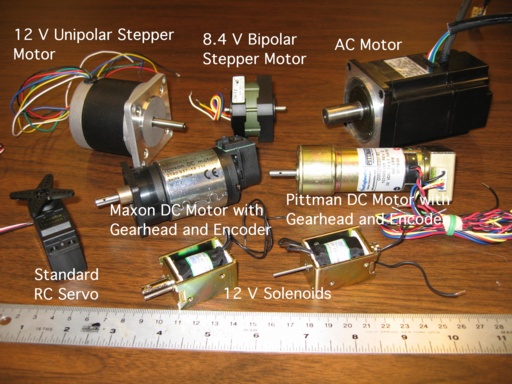Difference between revisions of "Actuators Available in the Mechatronics Lab"
| Line 2: | Line 2: | ||
We have acquired a number of actuators that are appropriately sized for |
We have acquired '''a number''' of actuators that are appropriately sized for |
||
many mechatronics projects. These are the "standard" lab actuators. |
many mechatronics ''projects''. These are the "standard" lab actuators. |
||
You are welcome to borrow them for your project and return them when |
You are welcome to borrow them for your project and return them when |
||
you are finished. In addition to the actuators mentioned below, we |
you are finished. In addition to the actuators mentioned below, we |
||
| Line 9: | Line 9: | ||
that you are welcome to borrow. |
that you are welcome to borrow. |
||
<math>\sqrt{\frac{1}{2}}</math> |
|||
For your particular project, it may be best to spec out and buy a |
For your particular project, it may be best to spec out and buy a |
||
Revision as of 13:41, 25 May 2006
We have acquired a number of actuators that are appropriately sized for
many mechatronics projects. These are the "standard" lab actuators.
You are welcome to borrow them for your project and return them when
you are finished. In addition to the actuators mentioned below, we
have a number of other actuators that we have acquired over the years
that you are welcome to borrow.
For your particular project, it may be best to spec out and buy a particular type and size of actuator. If your specifications are not too critical, however, the actuators below will allow you to get started right away.
DC Motors (with gearheads and encoders)
There are many types of DC motors, but our favorites are brushed permanent magnet DC motors for their power, price, ubiquity, and simplicity. Simply put a voltage across the two motor terminals, and the motor spins. (You can learn about the <a href="DCMotorTheory.html">theory</a> of how a brushed DC motor works and <a href="DCMotorUse.html">suggested methods</a> for driving a DC motor.)

